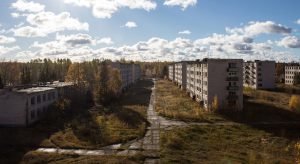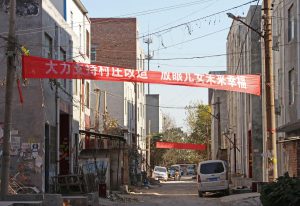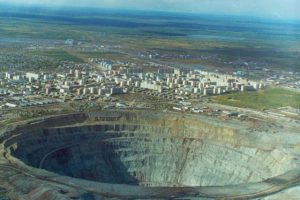MOVE or STAY ( Monotown vs Urban Village)
|
This thesis explores how some remained urban clusters like monotown and urban village in china develop under contemporary context. From architectural perspective, By a supposition based on a specific area, how these urban clusters converse form conventional constrains. Context: A monotown (a calque from Russian моногород, monogorod; gorod=”town”) is a city or town whose economy is dominated by a single industry or company. The term is especially often used in Russia, where the Soviet planned economy created hundreds of monotowns in supposedly rational locations, often in geographically in hospitable areas. The situation in many of Russia’s monotowns is highly problematic: they are entirely dependent on the competitiveness of a single company or factory, very unflexible and based on Soviet-era economics and technologies. A Urban Village are villages that appear on both the outskirts and the downtown segments of major Chinese cities, including Shenzhen and Guangzhou. They are surrounded by skyscrapers, transportation infrastructures, and other modern urban constructions. Urban villages are a unique phenomenon that formed part of China’s urbanization efforts.
Problem and Comparison Most monotowns were built essentially as residential extensions of particular enterprises, their population being either engaged in the city-forming enterprise’s manufacturing process, or providing various services to the former group. The core workforce in monotowns was largely formed by the centralized workforce distribution system rather than by spontaneous migration processes , as it was the case in less specialized towns. Combined, these factors led to narrow and inflexible economies and an immobile workforce.By the time the city-forming enterprises had been privatized or liquidated, the workforce management system already ceased to exist, so the leftover workforce could not be transferred to other regions retaining the living conditions, as it was done during the Soviet era following the liquidation of a no longer needed enterprise. Monotown residents proved to be hesitant to move away on their own and seek work elsewhere as well, mostly because the state housing distribution system lied almost dead at the time, and very low market value of their real estate didn’t let them count on minimally comfortable apartments in any other developed town. While urban village, which are an outcome of spontaneous migration processes under fast development in urban China, are commonly inhabited by the poor and transient, and as such they are associated with squalor, overcrowding and social problems. Urban villages are not regulated by any form of centralised urban planning. Most of them are heavily populated, intensely developed, and lack infrastructure. They are composed of crowded multi-story buildings ranging from three to five floors. Such dense villages serve to provide cheap accommodation for the impoverished population who come from the rural areas. Residents resist to move out if the villages because they are unable to find other cheap and well-located accommodations.
These two living clusters are all outcomes from urban renewal process or policy shifts. My project intends to study these two enclosed urban living typologies. For instance, monotown plays as an isolated city system from normal cities, while urban village runs it own system of communities which is out of city management system. Monotown’s request for change is due to inner problem it is facing, while urban village’s reconstruction and remove projects are under passive condition mostly triggered by the city expansion. What I expect is to combine these typologies keeping balance between overdevelopment and undeveloped. Order vs Chaos, Collective vs Disrupt, Random vs Prudent, these comparison could be references these typologies can complement with each other. By supposing a proposal onto a specific site in Asbest which is an open pit and strip mines in Russia, try to make architectural interventions to bring back vitality to this town. Remain habitants stay as well as inserting new programs. Based on urban villages, the positive aspects of such self-growing architectural system can bring vigour onto monotown. By reutilising the mine before recession of such single-industry city form, though such changes are an complexity in terms of social issue, what I expect is to manifest potential of such worldwide swift under architectural interventions.
Reference “Darkness on the Edge of Monotown”. The New York Times. 2009-10-16. “Research on Shenzhen Urban Village” (深圳特区城中村研究“ )Wang Ruyuan,,2004 “Russian Economic Report, June 2010” World Bank. June 2010. |


